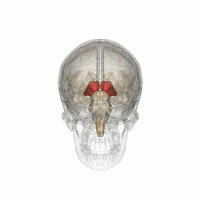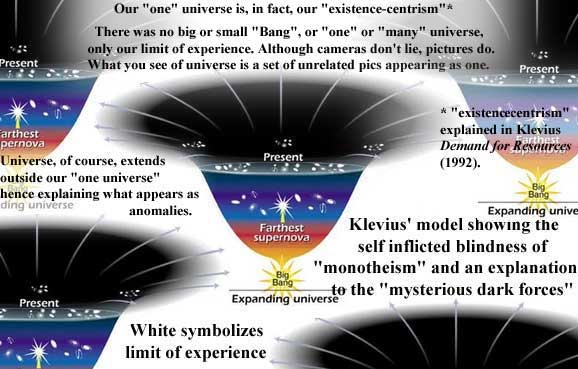Peter Klevius, Stephen Hawking - and John Searle, on sex, free will and consciousness.
Because Klevius has always been physically extremely fit all his life, and because he has never needed any other stimuli than heterosexual attraction to perform sex whenever it suits him and (women) and in full control, Klevius fully understands and has sympathy for a guy like Stephen Hawking.
Diagnosed at 21 with the debilitating disease ALS has left him almost entirely paralyzed, to speak, he has an infrared sensor mounted on his eyeglasses that picks up twitches from a muscle in his cheek and transmits them to a screen with scrolling letters, stopping at each desired letter. He averages about a word a minute. However, his testosterone levels are still sky high compared to any woman on the planet, and his penis shouldn't have been altered by ALS.
Therefore it comes as no aurprise that Hawking is said to be a big fan of strip clubs.
Peter Stringfellow, who runs Stringfellows strip clubs: “Isn’t he the answer to people who attack the sexual side of our human-ness? They’re all charging at windmills, you know. It’s there.”
Peter Klevius: However, the windmill is male!
Hawking became a regular at Stringfellows strip club in London, and Stringfellow recalls one night: 'I went and introduced myself and said, ‘Mr. Hawking, it’s an honor to meet you. If you could spare a minute or two, I’d love to chat with you about the universe. Or would you rather look at the girls? The Girls, Hawking answered.’
Hawking has also reportedly been spotted numerous times getting lap dances at the California strip club Devore, and was even said to have frequented Freedom Acres, a swinger’s club in California.
“I have seen Stephen Hawking at the club more than a handful of times,” a member said, according to the Huffington Post. 'He arrives with an entourage of nurses and assistants. Last time I saw him, he was in the back ‘play area’ lying on a bed fully clothed with two naked women gyrating all over him.'
Tim Holt, University of Cambridge press officer, later confirmed that Hawking had frequented the swinger’s club, but claimed that he wasn’t a regular. 'This report is greatly exaggerated. He visited once a few years ago with friends while on a visit to California.'
Klevius: "Gyrating all over him". Klevius is sure he had a nice time although Klevius also recalls a so called "top massage" performed by a lady who rather seemed aimed for ejaculation than heterosexual eroticism. So Klevius can see a certain handicap in these kind of situations for people like Hawking - unless, of course, he was able to communicate his feelings via some gadget, and moreover, that the ladies respected it. Ejaculation is short like a sneeze, while active hetero-eroticism can last for long.
However, and this is Klevius sex segregation point: Never let heterosexual attraction shade personhood. Here both men and women often miss the point. Men see women as the "heterosexual other", sometimes even "inferior other", and women often contribute to this view by confusing their heterosexual attraction with their personhood. The "body" sociology didn't help either to get out of this unfortunate catch 22 that Klevius has pointed at since his teens*.
* As a teenager Klevius was forced out of his country alone, without money, and with no previous ties. However, although Klevius managed the language and fixed a decent job, he didn't manage the local, and quite different dialect, which caused problems communicating with prejudicial teen girls at noisy discotheques etc. However, in his job environment he happened to meet a very nice girl whose pictures he had used to drool over in a "men's magazine", and who told him she had never had sex. Klevius also met many young university teens who offered "posing" (sometimes Klevius got it even for free) in the main news paper and who had their "offices" just behind Klevius workplace in the most central part of the capital city. Those girls made a very distinct line (no copulation) between themselves and what they called the "whores". Times have changed but the entanglement of heterosexual attraction and female personhood in sex segregation is still equally unsolved for most girls/women. But with a (negative) Human Rights approach based on the 1948 Universal Human Rights Declaration no woman should have to suffer of sex segregational prejudices about sex - no matter how sexy men might think she looks like, and no matter if she doesn't want to have to do with heterosex or sex at all, icl. if she doesn't want to have children.
Yes, Klevius knows. These kind of thoughts make him an evil "islamophobe". But that's sadly the fate nowadays for anyone defending everyone's Human Rights - even women's.
Drawing from 1979 by Peter Klevius.
John Searle seems to have a quite different approach to heterosexual attraction and consciousness than Klevius.
In a lawsuit Joanna Ong, 24, is seeking damages for sexual harassment and assault as well as for wrongful termination and creation of a hostile work environment.
“As a philosopher, Searle should be familiar with the concept of coercion. Instead, he and the university have “used their power and platform to abuse others.”
The lawsuit, which lists Searle and the Regents of the University of California as defendants, claims Searle groped Ong in his office after he told her “they were going to be lovers.” He also said he had an “emotional commitment to making her a public intellectual,” the complaint states, and that he was “going to love her for a long time.” Ong turned Searle down and reported him to other UC Berkeley employees, but they did nothing, the complaint states. Instead, Searle cut Ong’s salary and she was eventually fired, according to the complaint, which also claims Searle watched pornography at work and made sexist comments.
Searle, 84, is famous for his work in the philosophy of language and the philosophy of mind and has taught at UC Berkeley since 1959.
Artificial intelligence (AI), consciousness - and EMAH
Wikipedia: Artificial intelligence (AI) is intelligence exhibited by machines. In computer science, the field of AI research defines itself as the study of "intelligent agents": any device that perceives its environment and takes actions that maximize its chance of success at some goal
Peter Klevius: A shock absorber fulfills every bit of this definition - and can be digitally translated, i.e. e.g. "shock absorbed by wire", either partially or fully!
Wikipedia: As machines become increasingly capable, mental facilities once thought to require intelligence are removed from the definition. For instance, optical character recognition is no longer perceived as an example of "artificial intelligence", having become a routine technology.
Are there limits to how intelligent machines – or human-machine hybrids – can be? A superintelligence, hyperintelligence, or superhuman intelligence is a hypothetical agent that would possess intelligence far surpassing that of the brightest and most gifted human mind. ‘’Superintelligence’’ may also refer to the form or degree of intelligence possessed by such an agent.
The philosophical position that John Searle has named "strong AI" states: "The appropriately programmed computer with the right inputs and outputs would thereby have a mind in exactly the same sense human beings have minds." Searle counters this assertion with his Chinese room argument, which asks us to look inside the computer and try to find where the "mind" might be.
Searle's thought experiment begins with this hypothetical premise: suppose that artificial intelligence research has succeeded in constructing a computer that behaves as if it understands Chinese. It takes Chinese characters as input and, by following the instructions of a computer program, produces other Chinese characters, which it presents as output.
Suppose, says Searle, that this computer performs its task so convincingly that it comfortably passes the Turing test: it convinces a human Chinese speaker that the program is itself a live Chinese speaker. To all of the questions that the person asks, it makes appropriate responses, such that any Chinese speaker would be convinced that they are talking to another Chinese-speaking human being.
Searle then supposes that he is in a closed room and has a book with an English version of the computer program, along with sufficient paper, pencils, erasers, and filing cabinets. Searle could receive Chinese characters through a slot in the door, process them according to the program's instructions, and produce Chinese characters as output. If the computer had passed the Turing test this way, it follows, says Searle, that he would do so as well, simply by running the program manually.
Searle asserts that there is no essential difference between the roles of the computer and himself in the experiment. Each simply follows a program, step-by-step, producing a behavior which is then interpreted as demonstrating intelligent conversation. However, Searle would not be able to understand the conversation. ("I don't speak a word of Chinese",he points out.) Therefore, he argues, it follows that the computer would not be able to understand the conversation either.
Searle argues that, without "understanding" (or "intentionality"), we cannot describe what the machine is doing as "thinking" and, since it does not think, it does not have a "mind" in anything like the normal sense of the word. Therefore, he concludes that "strong AI" is false.
Peter Klevius: Nonsense! 'Intentionality' is an illusion. There's no "gap" between input and output where 'intentionality' could be squeezed in. Moreover, if Searle believes in 'intentionality' he can't refute 'the free will' either. The machine could also be understood by the Chinese speakers without "understanding" - only fulfilling the Turing criterion. There is no 'understanding' or consciousness', other than the usage of these terms.
Wikipedia: No one would think of saying, for example, "Having a hand is just being disposed to certain sorts of behavior such as grasping" (manual behaviorism), or "Hands can be defined entirely in terms of their causes and effects" (manual functionalism), or "For a system to have a hand is just for it to be in a certain computer state with the right sorts of inputs and outputs" (manual Turing machine functionalism), or "Saying that a system has hands is just adopting a certain stance toward it" (the manual stance). (p. 263)
Searle argues that philosophy has been trapped by a false dichotomy: that, on the one hand, the world consists of nothing but objective particles in fields of force, but that yet, on the other hand, consciousness is clearly a subjective first-person experience.
Searle says simply that both are true: consciousness is a real subjective experience, caused by the physical processes of the brain. (A view which he suggests might be called biological naturalism.)
Ontological subjectivity
Searle has argued[48] that critics like Daniel Dennett, who (he claims) insist that discussing subjectivity is unscientific because science presupposes objectivity, are making a category error. Perhaps the goal of science is to establish and validate statements which are epistemically objective, (i.e., whose truth can be discovered and evaluated by any interested party), but are not necessarily ontologically objective.
Searle calls any value judgment epistemically subjective. Thus, "McKinley is prettier than Everest" is "epistemically subjective", whereas "McKinley is higher than Everest" is "epistemically objective." In other words, the latter statement is evaluable (in fact, falsifiable) by an understood ('background') criterion for mountain height, like 'the summit is so many meters above sea level'. No such criteria exist for prettiness.
Beyond this distinction, Searle thinks there are certain phenomena (including all conscious experiences) that are ontologically subjective, i.e. can only exist as subjective experience. For example, although it might be subjective or objective in the epistemic sense, a doctor's note that a patient suffers from back pain is an ontologically objective claim: it counts as a medical diagnosis only because the existence of back pain is "an objective fact of medical science".[49] But the pain itself is ontologically subjective: it is only experienced by the person having it.
Searle goes on to affirm that "where consciousness is concerned, the existence of the appearance is the reality".[50] His view that the epistemic and ontological senses of objective/subjective are cleanly separable is crucial to his self-proclaimed biological naturalism.
Klevius: All of this is more or less non sense due to a balancing act (deliberate or just out of ignorance) to satisfy certain needs and wishes. To understand this you need to read Klevius and contrast it with the above:
1 Existence-centrism (Klevius 1992:21-23, ISBN 9173288411), i.e. the simple fact that there's no difference between 'reality' and 'conscious experiences'.
2 Klevius EMAH - the Even More Astonishing Hypothesis which eliminates prejudices about the mind, as well as the naive idea about "a thoughtful and subjective brain", and therefore opens up for a human brain that fits the nature it belongs to and from which it emerged. Moreover, Klevius analysis also opens up for a more truly human approach to other humans, i.e. that that's what we have in common - and only we can see it, not a non-human (Klevius 1992:36-39), which fact doesn't eliminate that we should try to cope with non-humans in a "humane" way.
.


































































































































No comments:
Post a Comment